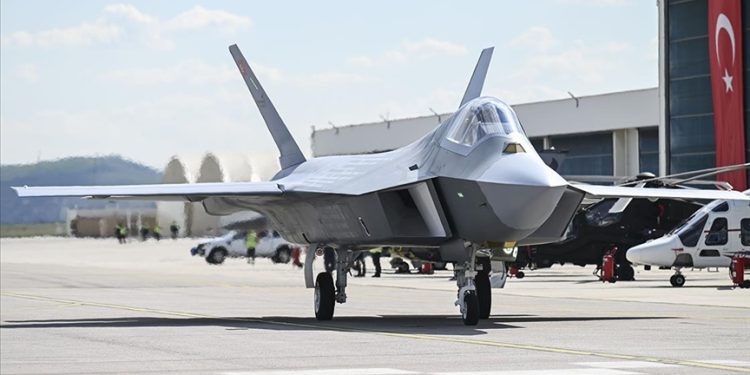An increasing number of nations globally have initiated their own fighter jet manufacturing programs.
Foreign Policy, a US-based magazine, noted the shift to a multipolar era in the fighter jet market and specifically mentioned Türkiye’s 5th generation fighter jet program.
The analysis asked, “Can the F-35 and the US keep up with the new competition?” It was noted that jet engines play a crucial role in the meetings of the heads of state.
Discussing Türkiye’s stance amidst the emerging trend, it was stated that “Now, Türkiye, with its KAAN TF fighter, has joined in.”
As per TAI’s announcement, KAAN offers superior air dominance through an extended air-to-air combat range with advanced weaponry, precise and potent strikes from internal weapon bays at supersonic speeds, and heightened combat effectiveness with artificial intelligence and neural network reinforcement.
“If Washington doesn’t adapt by prioritizing the sale of the systems and technologies that power other countries’ jets, the United States will fall behind in the global defense market,” the media outlet noted.
By the late 2030s, the global fighter market—and defense market in general—will be much more fragmented, and less U.S.-dominated, than today. https://t.co/sMEgX8ub2H
— Foreign Policy (@ForeignPolicy) August 14, 2023
The developments were underscored as indicative of a worldwide trend toward the resurgence of domestically produced fighter jets.
The magazine highlighted South Korea’s involvement in this trend through the KF-21 Boramae and Taiwan’s reentry with the Ching-Kuo.
Earlier this year, the United Arab Emirates announced its intention to develop its own aircraft. Additionally, reports indicated the potential involvement of Saudi Arabia in the fighter jet program within the Italy-England-Japan partnership.
Key features of the KAAN fighter jet
- Wingspan: 14 m
- Length: 21 m
- Height: 6 m
- Max speed: 1.8 Mach
- Service ceiling: 55,000 ft
Breaking News Turkey













